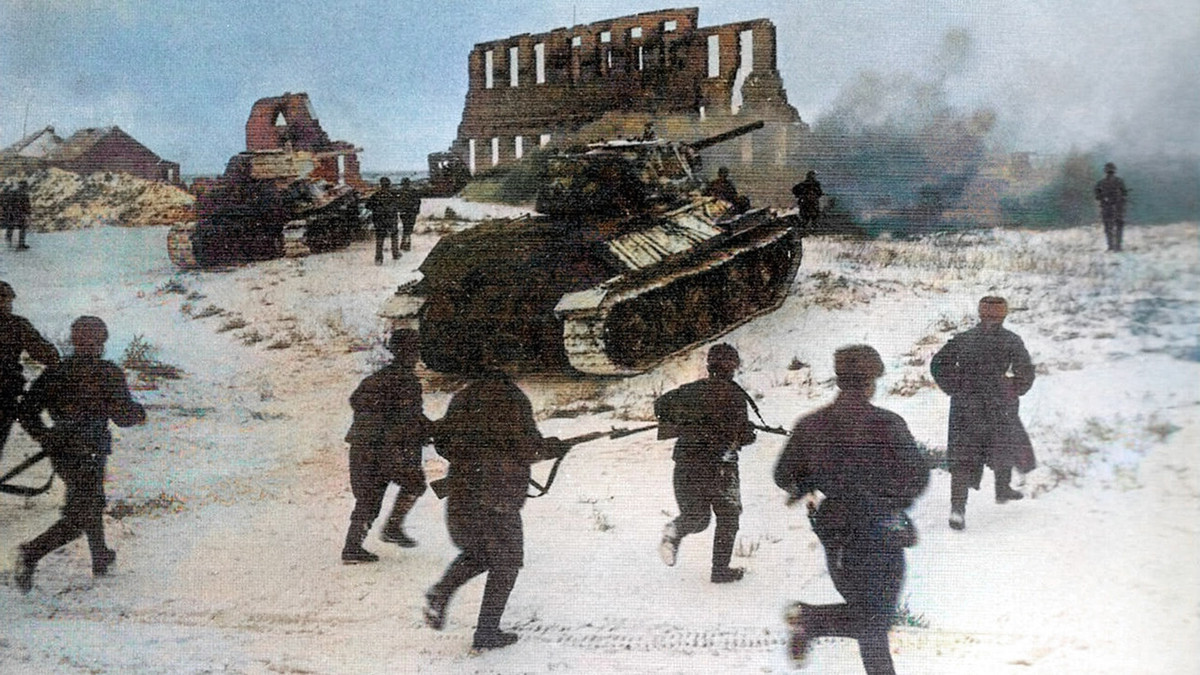
Ever wondered about the gritty details behind one of history's most pivotal battles? Well, you're in for a treat! The Battle of Stalingrad wasn't just any old skirmish; it was a clash of titans, a turning point in World War II that shifted the tide against the Axis powers. Imagine two colossal forces, locked in a grueling fight, not just for land, but for the very spirit of their nations. This battle wasn't just about strategy and firepower; it was about endurance, bravery, and the sheer will to survive. Ready to dive into some mind-blowing facts about this epic confrontation? Buckle up, because we're about to take a trip back to 1942-1943, where every day was a matter of life and death, and the stakes couldn't have been higher.
Key Takeaways:
- The Battle of Stalingrad was a turning point in World War II, showcasing the Soviet Union's resilience and determination, and leading to a surge in Allied support for the Soviet Union.
- The battle's legacy includes cultural impact, tactical innovations, and the unbreakable spirit of the human capacity to endure and overcome overwhelming odds.
The Turning Point of World War II
The Battle of Stalingrad, fought between July 17, 1942, and February 2, 1943, stands as one of the most pivotal confrontations of World War II. This brutal clash not only marked the turning of the tide against the Axis powers but also showcased the resilience and determination of the Soviet Union. Here, we delve into some remarkable facts about this historic battle.
- Stalingrad was targeted by Hitler as a key industrial city and a gateway to the Caucasus oil fields, crucial for the Nazi war effort.
- The battle's name comes from the city at its center, Stalingrad, which was later renamed Volgograd in 1961.
The Scale of the Conflict
- The Battle of Stalingrad is among the deadliest battles in the history of warfare, with estimates of the total number of casualties ranging up to 2 million people, including soldiers and civilians.
- It involved massive aerial bombardments, intense urban warfare, and vast armored engagements across the Eastern Front.
The Role of Snipers
- Snipers played a significant role in the urban warfare of Stalingrad, with Vasily Zaitsev being one of the most famous. He is credited with killing 225 soldiers and officers of the Wehrmacht and other Axis armies during the battle.
- Sniper duels became a hallmark of the fighting in Stalingrad, adding a psychological dimension to the already intense combat.
The Harsh Winter
- The battle extended into the harsh Russian winter, with temperatures dropping as low as -30°C (-22°F). This extreme cold further complicated life for the soldiers, affecting their health, equipment, and overall combat effectiveness.
The Soviet Counteroffensive
- Operation Uranus, launched by the Soviets on November 19, 1942, was a major counteroffensive that encircled the German 6th Army. This maneuver was critical in turning the tide of the battle in favor of the Red Army.
- The encirclement trapped about 300,000 Axis soldiers, cutting them off from supplies and reinforcements.
The Aftermath and Legacy
- The defeat at Stalingrad was the first major loss for the German army in World War II and marked a significant turning point in the conflict.
- The battle's outcome boosted Soviet morale and demonstrated their capability to defeat the Axis powers, leading to a surge in Allied support for the Soviet Union.
- Stalingrad has since become a symbol of Soviet endurance and military prowess, commemorated in Russia as a testament to national strength and sacrifice.
- The city's defense was led by General Vasily Chuikov, whose tactics of close-quarters combat and resilience under siege were pivotal to the Soviet victory.
- The battle also saw the first deployment of the Katyusha rocket launchers, which would become a fearsome weapon for the Red Army in the subsequent stages of the war.
The Human Cost
- Civilian casualties were immense, with the pre-war population of Stalingrad suffering greatly due to both the battle and the preceding German aerial bombardment.
- Many soldiers and civilians alike were reduced to scavenging for food and supplies in the devastated city, highlighting the dire conditions endured during the siege.
The International Impact
- The Battle of Stalingrad received significant international attention, influencing Allied strategy and diplomatic relations.
- It was a critical factor in convincing Winston Churchill and Franklin D. Roosevelt of the necessity to open a second front in Western Europe to relieve pressure on the Soviet Union.
The Cultural Legacy
- The battle has been immortalized in numerous films, books, and songs in Russia and beyond, reflecting its profound impact on global memory and culture.
- Monuments and memorials dedicated to the heroes of Stalingrad can be found throughout Russia, serving as enduring reminders of their sacrifice.
- The Stalingrad Madonna, a sketch made by a German soldier during the battle, has become an iconic symbol of hope and suffering amidst the horrors of war.
The Tactical Innovations
- The battle showcased the effectiveness of urban warfare tactics, including the use of "rat warfare" techniques by Soviet soldiers to move through the city's sewers and ruins.
- It also demonstrated the strategic value of aerial supremacy, as the Soviet Air Force gradually gained control over the skies, significantly impacting the outcome.
The Psychological Warfare
- Propaganda played a crucial role on both sides, with each using radio broadcasts, leaflets, and loudspeakers to demoralize the enemy and bolster their own troops' morale.
- The psychological toll on the German 6th Army was immense, with soldiers facing not only the physical hardships of combat and climate but also the mental strain of isolation and encirclement.
The Legacy of Leadership
- General Paulus, commander of the German 6th Army, was promoted to Field Marshal by Hitler shortly before the surrender, a move intended to discourage his capitulation. Paulus surrendered anyway, becoming the first German Field Marshal to be captured.
- The leadership of both Chuikov and Paulus has been extensively studied for their contrasting styles and decisions during the battle, offering valuable lessons in military strategy and leadership under pressure.
The Unbreakable Spirit
- The Battle of Stalingrad remains a powerful example of determination, resilience, and the human capacity to endure and overcome in the face of overwhelming odds.
A Final Glance at Stalingrad's Legacy
Stalingrad, a name etched in history, stands as a testament to human resilience, strategic brilliance, and the sheer will to survive against all odds. This battle, more than just a military confrontation, reshaped the course of World War II and left a lasting impact on global geopolitics. Its tales of heroism, sacrifice, and endurance continue to inspire and educate. For anyone delving into the annals of history, the Battle of Stalingrad isn't just a chapter on war; it's a story of human spirit, a reminder of the depths of despair and the heights of victory humans can achieve. As we look back, let's honor those who fought, those who fell, and the lessons learned, ensuring their sacrifices weren't in vain. Stalingrad's legacy, complex and profound, remains a powerful mirror reflecting the best and worst of humanity.
Frequently Asked Questions
Was this page helpful?
Our commitment to delivering trustworthy and engaging content is at the heart of what we do. Each fact on our site is contributed by real users like you, bringing a wealth of diverse insights and information. To ensure the highest standards of accuracy and reliability, our dedicated editors meticulously review each submission. This process guarantees that the facts we share are not only fascinating but also credible. Trust in our commitment to quality and authenticity as you explore and learn with us.


